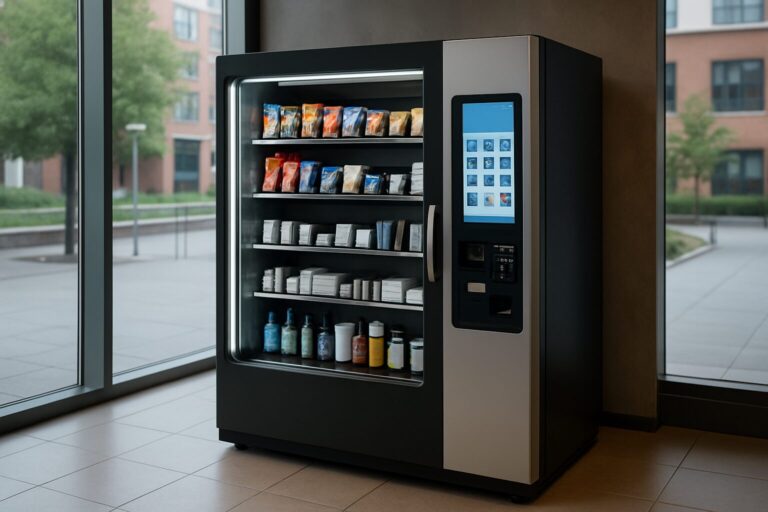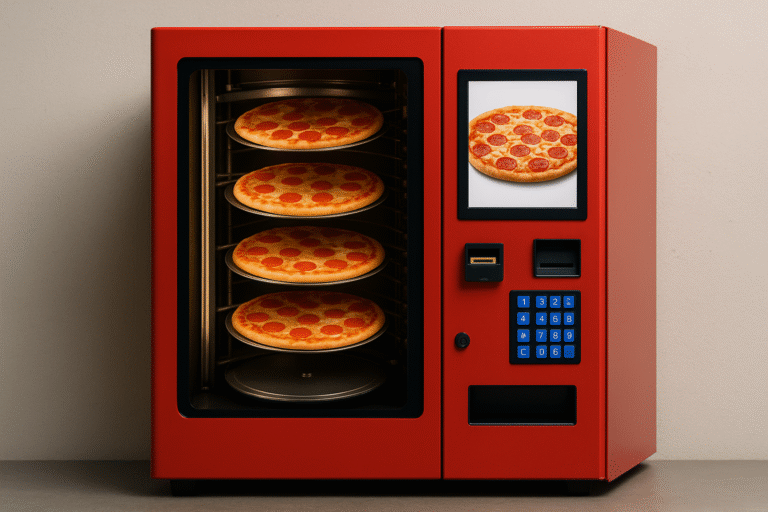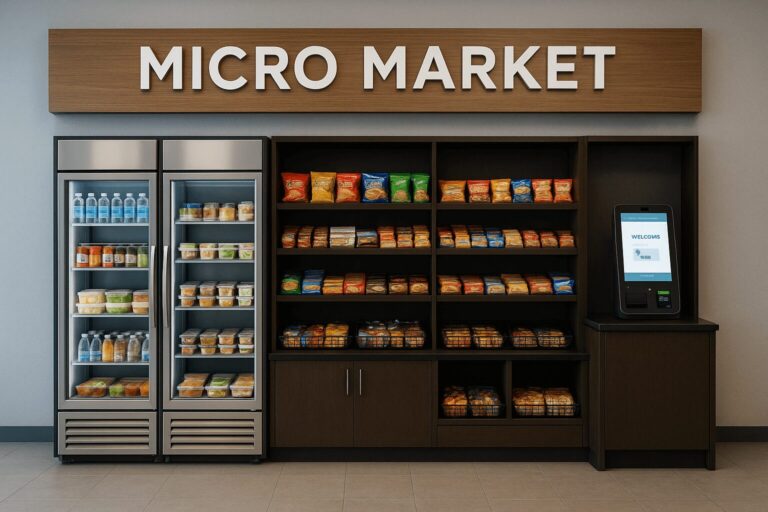Embracing vending machine data analytics revolutionizes how operators approach sales, inventory, and customer engagement. In-depth analysis of consumer transactions and preferences drives smarter business decisions, enabling vending services to be more responsive, personalized, and profitable. As data becomes a pivotal element in retail strategy, vending machines equipped with analytical capabilities are setting the new standard for automated retail success.
Deciphering Sales Patterns with Vending Machine Data Analytics
Vending machine data analytics is particularly adept at deciphering complex sales patterns. By analyzing sales data, vending machine operators can identify which products sell best at specific times of the day or days of the week, and adjust their offerings to match these patterns. This results in more targeted product availability, enhancing the chance of a sale with each customer interaction.
Periodic data analysis can also reveal surprising consumer behavior trends, such as a sudden spike in demand for a new product or a gradual decline in a previously popular item. Such insights are invaluable for keeping the vending machine offerings fresh and aligned with consumer desires, ensuring repeat business.
Moreover, analyzing long-term sales patterns can help in forecasting future demand, allowing vending machine operators to prepare for seasonal fluctuations. For example, an increase in the sale of cold beverages during summer or hot beverages in winter can inform stock levels, ensuring that the vending machines are always meeting consumer expectations.
Inventory Management Optimized by Analytic Insights
Effective inventory management is crucial for vending machine operators, and data analytics provides a robust tool for achieving it. By tracking inventory levels and product expiry dates, operators can minimize waste and ensure the freshness of their offerings. This is particularly important for food and beverage vending machines, where product freshness directly impacts customer satisfaction.
Analytics also streamline the replenishment process, tailoring restocking frequency to match real-time usage patterns instead of relying on a set schedule. This lean inventory strategy cuts operational costs and enhances cash flow by freeing up capital from slow-moving stock.
Additionally, data analytics can help operators experiment with different product assortments and measure the impact of these changes on sales. This approach fosters a cycle of continuous improvement, constantly refining the product mix to align closely with consumer preferences.
Enhancing Product Variety via Vending Machine Data Analytics
Vending machine data analytics enable a level of personalization that can significantly enhance the customer experience. By understanding individual customer preferences, operators can tailor the product selection to cater to the tastes of specific consumer groups. This could be particularly effective in locations like offices or schools, where vending machines serve a consistent user base.
Analyzing purchase histories can also lead to personalized promotions and discounts targeted at individual users. For instance, a customer who frequently purchases energy drinks could be offered a discount on their next purchase. Such personalized touches not only increase customer satisfaction but also encourage brand loyalty.
The data can even drive the implementation of loyalty programs, rewarding repeat customers and providing incentives for regular purchases. This level of personalization was once only possible in online retail but is now increasingly feasible in the vending machine sector, thanks to data analytics.
Strategic Product Placement Informed by Vending Machine Data Analytics
Strategic product placement is another area where vending machine data analytics can have a substantial impact. By analyzing which products are most often bought together, operators can position these items adjacent to each other within the machine, potentially increasing the average transaction value.
Data can also inform the physical placement of vending machines themselves. Analytics uncover which areas experience high foot traffic, leading to more machine use, and identify underutilized spots. Operators can then position their vending machines in locations with higher potential for usage.
Furthermore, vending machine data analytics can indicate the need for varying product assortments in different locations. For example, machines in a gym might stock a different range of products compared to those in a corporate office building, based on the consumption patterns revealed by data analytics.
Price Optimization Driven by Vending Machine Data Analytics
Price optimization is a delicate balance, and vending machine data analytics provide the insights needed to get it right. By examining how small changes in price affect sales volume, vending machine operators can find the sweet spot that maximizes revenue without deterring customers.
Dynamic pricing strategies can also be developed using analytics, adjusting prices based on time of day or the popularity of certain items. For instance, a coffee vending machine might reduce prices after peak hours to continue attracting customers throughout the day.
The data gathered can also highlight the elasticity of demand for various products. Understanding how sensitive consumers are to price changes for different items can help operators make informed decisions about which products can withstand a price increase and which ones cannot.
Forecasting and Trend Analysis with Vending Machine Data Analytics
The predictive power of vending machine data analytics allows for effective forecasting and trend analysis. Operators can identify emerging trends in consumer preferences, enabling them to stay ahead of the curve by introducing new products that are likely to be successful.
Seasonal trends can also be anticipated with greater accuracy. Vending machine data analytics can highlight changes in consumer behavior that correlate with seasonal events or weather patterns, allowing operators to adapt their offerings in advance.
In addition to anticipating trends, analytics can also be used to measure the lifecycle of products. Operators can determine when a product is losing its appeal and replace it before it becomes a drag on sales.
Maximizing Uptime with Predictive Maintenance Through Vending Machine Data Analytics
Predictive maintenance is a critical advantage of utilizing vending machine data analytics. Machines equipped with sensors can collect data on their operational status, alerting operators to potential issues before they result in machine downtime.
This proactive approach to maintenance can greatly enhance customer satisfaction by ensuring that machines are always operational when consumers want to use them. It also helps operators avoid the costs associated with emergency repairs and lost sales during unexpected breakdowns.
Moreover, data analytics can be used to schedule maintenance during off-peak hours, minimizing the impact on sales and customer experience. By analyzing usage patterns, operators can determine the best times for service interventions.
Leveraging Data for Sustainable Operations
Sustainability is becoming increasingly important, and vending machine data analytics can contribute to more environmentally friendly operations. By optimizing route planning for restocking and maintenance visits, operators can reduce their carbon footprint.
Analytics can also identify which products have higher rates of recycling or are more eco-friendly, allowing operators to make greener choices in their product selection. This not only appeals to environmentally conscious consumers but also aligns with global efforts to reduce waste.
In addition, data analytics can help in reducing energy consumption by identifying the most efficient operational schedules for vending machines, such as reducing cooling during times of low usage.
Competitive Benchmarking with Data Insights
Competitive benchmarking is an essential aspect of any business strategy, and vending machine data analytics can provide valuable benchmarks to compare against industry standards or competitors. By analyzing their performance data, operators can identify areas where they are excelling or where there is room for improvement.
This benchmarking can cover a range of factors, from sales velocity to machine downtime, and provides a clear picture of where a vending operation stands in the competitive landscape. It also helps in setting realistic and achievable targets for performance enhancement.
Additionally, benchmarking data can inspire innovation by highlighting areas where competitors are performing well, prompting operators to adopt new strategies or technologies to keep up with or surpass industry norms.
Data Analytics as a Tool for Regulatory Compliance
Finally, data analytics can play a crucial role in regulatory compliance. Operators can ensure that their machines meet health and safety standards by monitoring product expiry dates and machine cleanliness through data tracking.
Data can also help in complying with local vending machine regulations, which may dictate where machines can be placed or what products they can sell. By keeping track of such requirements and adjusting operations accordingly, vendors can avoid costly penalties and maintain good standing with regulatory bodies.
Furthermore, analytics can facilitate the reporting process required by many regulatory agencies, providing accurate and up-to-date information on various aspects of vending machine operations.
Conclusion: Embracing Vending Machine Data Analytics for Future-Proofing Your Business
In conclusion, data analytics are an indispensable part of modern vending operations. The insights gleaned from data not only optimize current operations but also pave the way for future growth. In today’s data-driven world, vending machine operators leveraging analytics stand at the forefront, ready to succeed in a competitive, constantly changing market.






